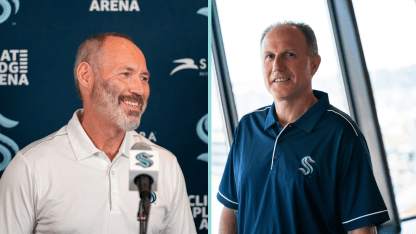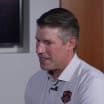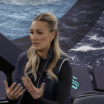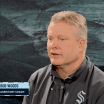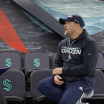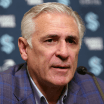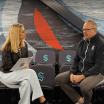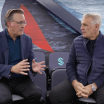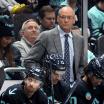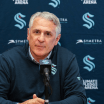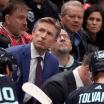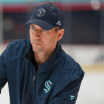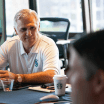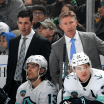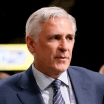Robert Kron, Director of Amateur Scouting
What can you share about the amateur scouting meetings a couple of weeks ago? What were they all about and what was the goal of that time together for you?
Yes, we've concluded our meetings, and they were very productive. Everybody came prepared...we have a great staff here and the goal of the meeting is pretty much to see what is out there in terms of (draft-eligible) players and how they are developing into the list that we will put together as we go. We get to hear from everybody from all the regions and we're still digesting (all of that information) to get us ready for the second half of the season.
Are these meetings a time for discussion about players? Is this a time when rankings maybe do start to come about even broadly? What is the spectrum of conversations you have?
Yes, we have discussions. Throughout the year, we do run a weekly Zoom call, and every (other) week, (we’re talking to either) North American scouts or European scouts, so we try to stay on top of things as we go.
But (these mid-season meetings) are very important for everybody to get into one room and submit their midseason lists and put all of that together and start to organize our organization list into priorities, so to speak. So yes, it was very important to talk to everybody and hear their voice about the players that they do have on their list and then have the ability to start getting (our) list together going forward.
You've been part of a lot of Draft preparation and Drafts, can you give our readers an idea of how much you expect things might change on your list between now and draft day? How close is your list to being complete, or are we nowhere near close?
No, we're nowhere close (laughs). We have a general idea, but we're going to the second half of the season and it's important for us, especially for what we refer to as our “crossover scouts” that oversee the whole list to have the ability to productively and effectively schedule themselves to see the top players live in the rink. The list is coming together, but this is a long season. These players obviously might take a trend one way or the other. But now we are set up for the second half to kind of have a general idea and knowledge of where we need to deploy resources and maybe dig deeper.
What is the value of being able to just get everyone in one room? You can obviously use Zoom, and everyone's all over the world, but how valuable is it to have people face to face?
To me, I don't think you can replace the face-to-face personal interaction and having everybody included. We work (together in the same) room and we also get to have a bit of social contact after the meetings - it's irreplaceable. It was something that was missing during the COVID years - we were productive, but it's really hard conducting everything on the Zoom screen, in my opinion. It is very important for us to get together and have that face-to-face interaction for sure.
Obviously, when you look on the pro side, the trade deadline is coming up they have that milestone but is there something about this time of year that makes it important for you to get together in person at this specific time?
You know, our scouts do such hard work. They are on the road most of their week, pretty much. So, they deserve to be in one room with the management and that way the appreciation for what they do can be expressed to them. Also, behind closed doors when you have people not arguing but discussing players and the ups and downs of their performance throughout the year, it’s a good midpoint check for everybody to do that and It's best done in person.
And to that point, when your meetings conclude, what is the directive that you give to your scouts and to your team to continue through to get ready for the Draft?
Well, nothing changes much. We are at the midpoint (of the season) so we continue with the work that we do. We delegate and trust our scouts. They have specialty areas because they have the knowledge in their particular area about the players that they need to double check on or make sure that what they've seen so far is still correct or if the players are developing or going the other way.
Now they have the ability to look at their schedules and productively put their time to good use. There's a lot of players they should go through and not all of them will end up on our list so, we're going to try to see how we can manage the (final) list into a manageable number that is ready to go at the Draft.
Is there anything that you want to make sure we share?
I just really want to express my appreciation for the people who work for us and do this on a daily basis. You know, they're away from their families, but they love what they do, and for them to be recognized and have a say is very important for our group.

